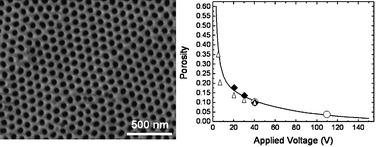Investigation of the pore formation in anodic aluminium oxide
Abstract
The mechanism accounting for the self-organization of nanoscale pores during anodic

* Corresponding authors
a
EaStChem, School of Chemistry, University of St. Andrews, St. Andrews, Fife, UK
E-mail:
wzhou@st-andrews.ac.uk
Fax: +44 1334 463808
Tel: +44 1334 467276
The mechanism accounting for the self-organization of nanoscale pores during anodic

 Please wait while we load your content...
Something went wrong. Try again?
Please wait while we load your content...
Something went wrong. Try again?
Z. Su, G. Hähner and W. Zhou, J. Mater. Chem., 2008, 18, 5787 DOI: 10.1039/B812432A
To request permission to reproduce material from this article, please go to the Copyright Clearance Center request page.
If you are an author contributing to an RSC publication, you do not need to request permission provided correct acknowledgement is given.
If you are the author of this article, you do not need to request permission to reproduce figures and diagrams provided correct acknowledgement is given. If you want to reproduce the whole article in a third-party publication (excluding your thesis/dissertation for which permission is not required) please go to the Copyright Clearance Center request page.
Read more about how to correctly acknowledge RSC content.
 Fetching data from CrossRef.
Fetching data from CrossRef.
This may take some time to load.
Loading related content
